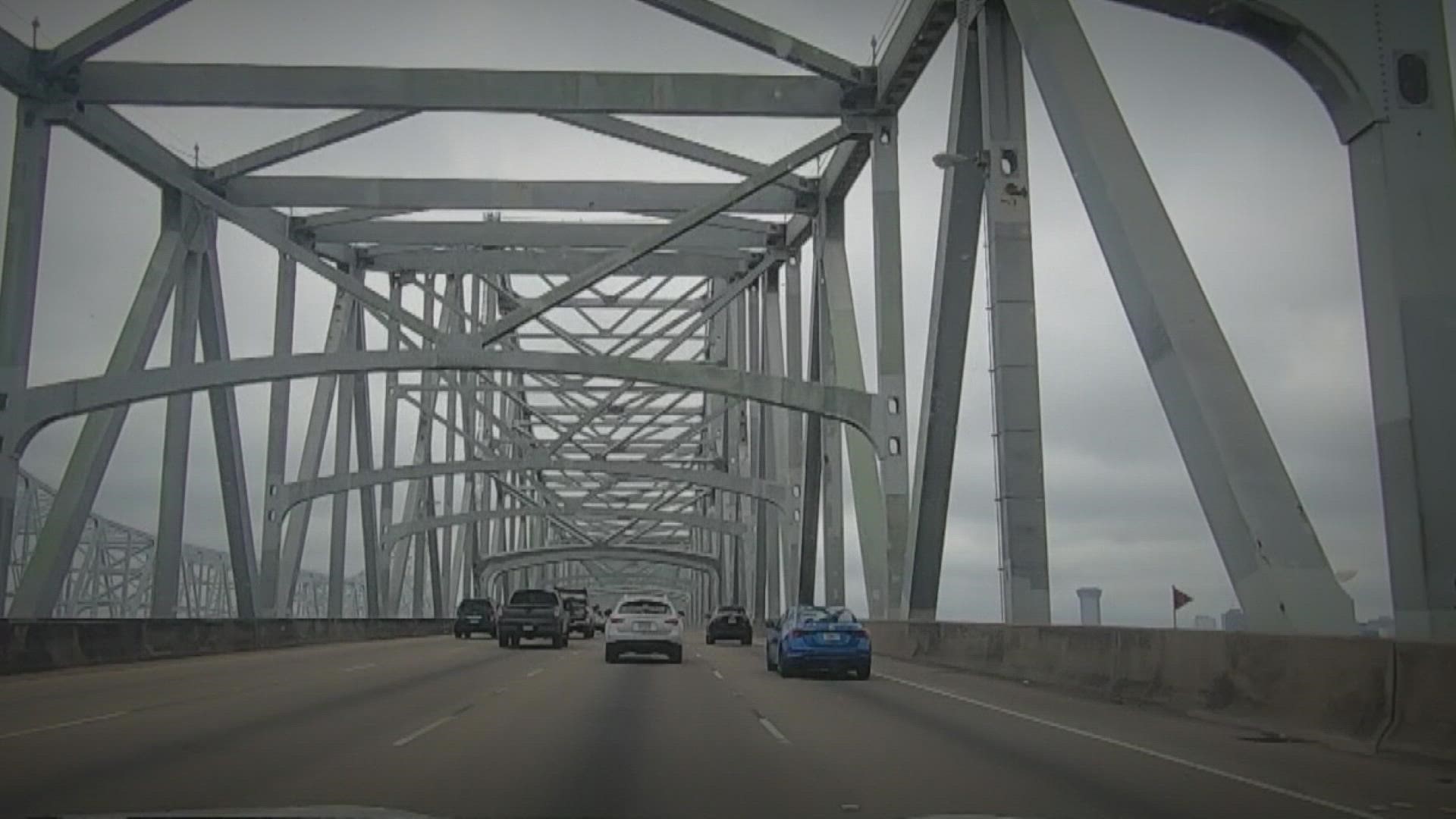MARRERO, La. — Crossing the Crescent City Connection bridge in New Orleans in rush hour traffic is not for the faint of heart, especially in recent months.
The evening commute has been a nightmare, especially for commuters going from the west bank to the east bank of the Mississippi River.
Erica Arnold is a legal assistant at a Marerro law office.
“It’s very frustrating,” Arnold said. “I commute to Slidell to here on the West Bank. More and more frequently the traffic’s been getting really, really bad.”
Senator Pat Connick, R-Marrero, heard the complaints and reached out to the Louisiana Department of Transportation and Development for answers.
He says DOTD told him part of the problem is with the stop-and-go signals that meter the frequency of vehicles entering the Pontchartrain Expressway.
Five of the seven meters installed on expressway on ramps are not working and haven’t been for a while.
“They’re confirming that the copper wire that’s in the system has been stripped out and when they went to replace it, it was stripped out again,” Connick said. “These copper wires are being sold for pennies and yet it’s causing thousands, tens of thousands of dollars in damage and also hours and hours of delays for people trying to get from one place to another.”
Connick added, without the ramp signals traffic backs up across the bridge onto the Westbank Expressway.
“If it’s going to be welding the system shut, that’s what we need to do. But we have to protect the system. We’ve got to protect the traffic signaling because that goes a long way in helping people move.”
People who work on the west bank say they’ve noticed it’s taken them 30 to 35 minutes just to get up and over the Crescent City Connection. At times, traffic backs up all the way to Manhattan Boulevard.
“Now, if I leave at 5, I won’t get home to 6:30, sometimes quarter of 7,” Arnold said.
According to DOTD, currently, there is no timeline for repairing the ramp signals.
The department is now working to redesign the system to make it as tamper-proof as possible.
The meters were installed in 2016.
They were turned off because of reduced traffic volumes at the start of the pandemic.
As traffic volumes began to increase, the meters were turned back on during evening peak traffic hours.

